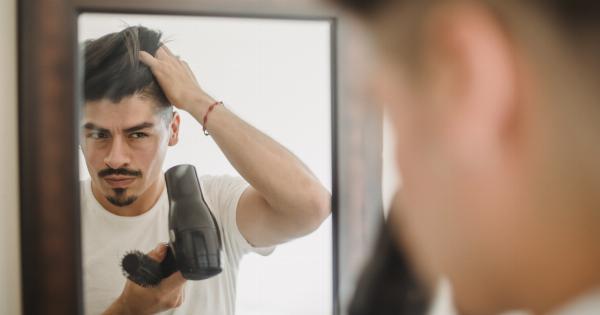Baldness and hair loss are common problems affecting millions of men and women worldwide. Thinning tresses can have a significant impact on one’s self-esteem and overall well-being.
Understanding the causes and available treatments for baldness and hair loss is essential in combating these conditions and promoting healthy hair growth.
The Hair Growth Cycle
Before delving into the intricacies of baldness and hair loss, it is essential to understand the hair growth cycle. The hair growth cycle consists of three key phases: anagen, catagen, and telogen.
Anagen Phase
The anagen phase is the active growth phase of the hair follicles. It typically lasts between two to seven years, during which the hair grows around one centimeter per month.
Around 85% to 90% of the hairs on the scalp are in the anagen phase at any given time.
Catagen Phase
The catagen phase is a short transitional phase that lasts for approximately two weeks. During this phase, the hair follicle shrinks, detaches from the blood supply, and stops producing new hair.
Only around 1% to 3% of the hairs on the scalp are in the catagen phase at any given time.
Telogen Phase
The telogen phase, also known as the resting phase, lasts for about three to four months. During this phase, the hair follicle remains dormant before eventually shedding the hair and entering a new anagen phase.
Approximately 10% to 15% of the hairs on the scalp are in the telogen phase at any given time.
Causes of Baldness and Hair Loss
Baldness and hair loss can be caused by a variety of factors, including:.
Heredity
One of the most common causes of baldness is hereditary or genetic factors. Male pattern baldness, also known as androgenetic alopecia, is a genetic condition inherited from either the mother’s or father’s side of the family.
Female pattern baldness is also influenced by genetics but presents differently than male pattern baldness.
Hormonal Changes
Hormonal changes can significantly impact hair growth and lead to hair loss.
For example, the hormonal changes that occur during pregnancy, menopause, or other conditions like polycystic ovary syndrome (PCOS) can contribute to temporary or permanent hair loss.
Medical Conditions and Treatments
Various medical conditions such as thyroid disorders, autoimmune diseases, and scalp infections can cause baldness or hair loss.
Additionally, certain medications, such as those used for cancer treatment (chemotherapy), can lead to temporary or permanent hair loss.
Poor Nutrition
A lack of essential vitamins and minerals in the diet can contribute to hair loss. Nutrients like iron, zinc, biotin, and vitamin D are vital for healthy hair growth.
Inadequate intake of these nutrients can weaken the hair follicles and result in hair thinning or loss.
Pulling and Traction
Excessive pulling or traction on the hair can cause a type of hair loss known as traction alopecia. This is commonly seen in hairstyles that involve tight ponytails, braids, or hair extensions.
Constant tension on the hair follicles can lead to damage and eventual hair loss.
Managing Baldness and Hair Loss
While it may not always be possible to prevent or reverse baldness or hair loss completely, there are several treatments and management techniques available to slow down the process and promote healthier hair:.
Medications
Medications such as minoxidil and finasteride are commonly used to treat pattern baldness. Minoxidil, available over-the-counter, is a topical solution that stimulates hair growth.
Finasteride, available with a prescription, works by inhibiting the production of dihydrotestosterone (DHT), a hormone responsible for shrinking hair follicles.
Hair Transplantation
Hair transplantation is a surgical procedure that involves removing hair follicles from one area of the body (usually the back or sides of the scalp) and implanting them into the balding areas.
This procedure can provide long-lasting results and natural-looking hair growth.
Scalp Micropigmentation
Scalp micropigmentation is a non-surgical procedure that involves the application of pigments to the scalp to mimic the appearance of hair follicles.
This technique is effective in creating the illusion of denser hair for those with thinning or bald areas.
Lifestyle Changes
Making certain lifestyle changes can also help manage baldness and hair loss.
These include reducing stress levels, adopting a balanced diet rich in essential nutrients, avoiding harsh hair treatments and hairstyles that cause traction, and using gentle hair care products.
Conclusion
Baldness and hair loss can significantly impact one’s appearance and self-confidence. Understanding the causes and available treatment options is crucial in managing these conditions effectively.
Whether through medications, surgical procedures, or lifestyle changes, there are various approaches to address thinning tresses and promote healthier hair growth.
























